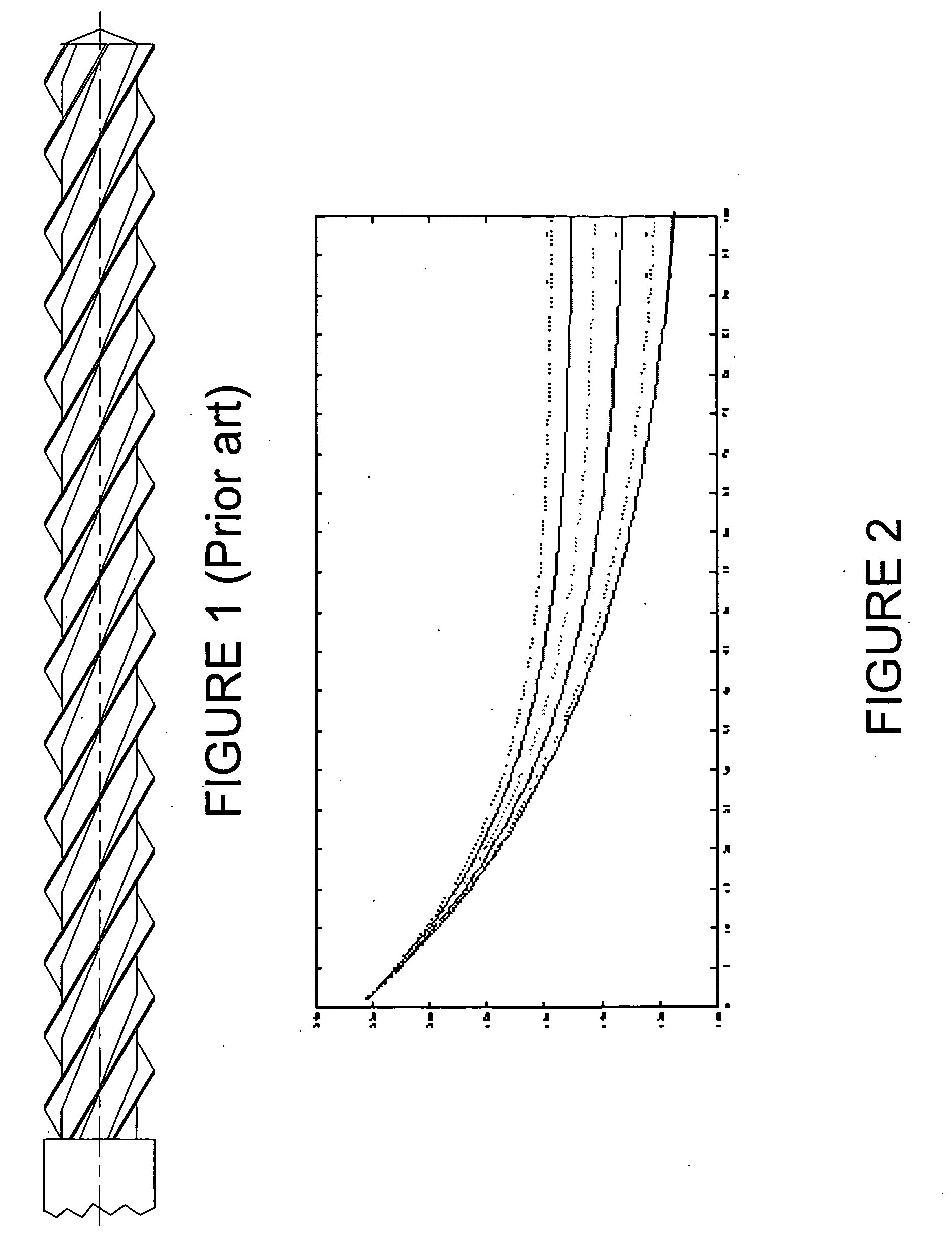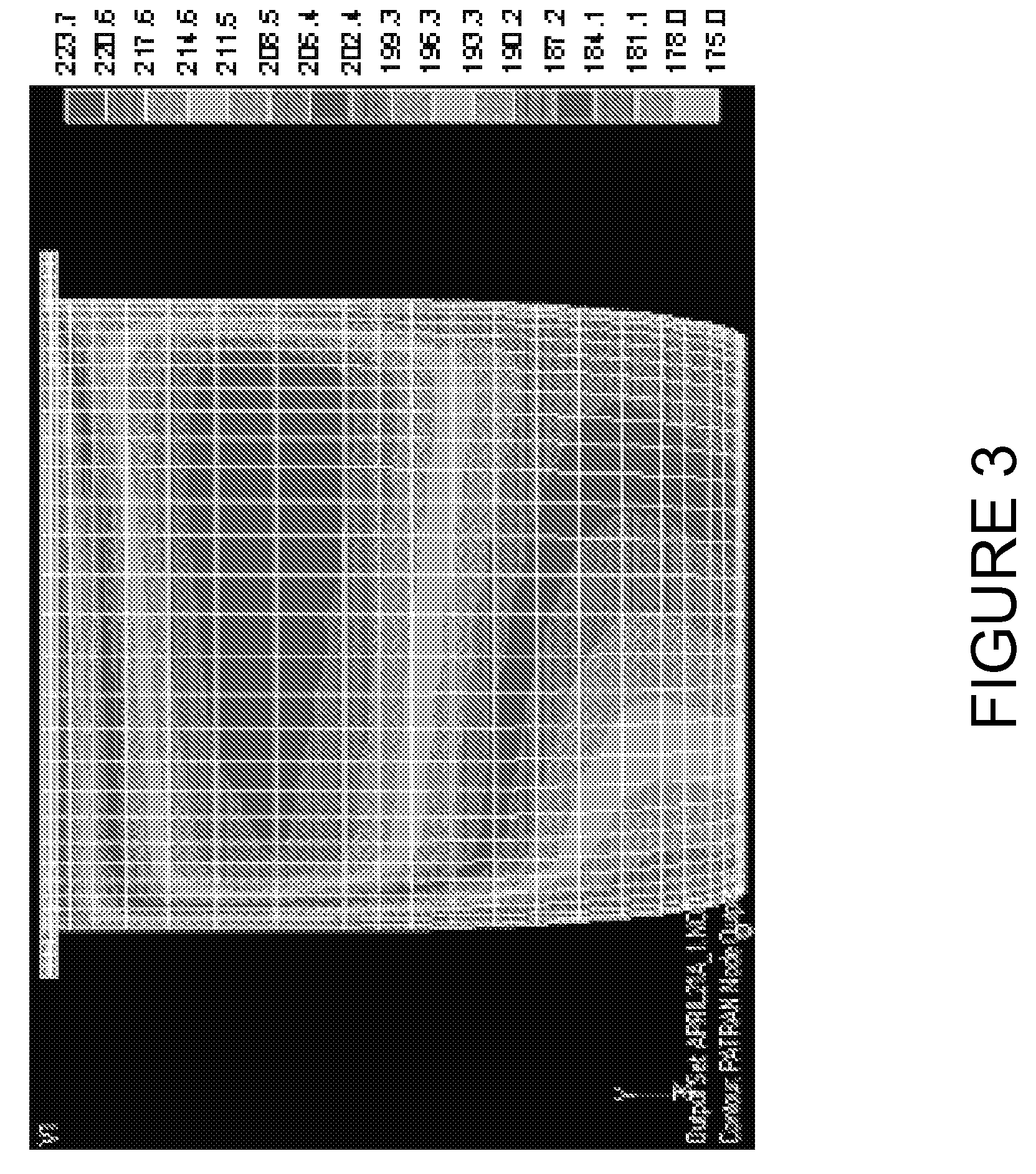Method of cooling material using an extruder screw configured for improved heat transfer
a technology of extruder screw and heat transfer, which is applied in the direction of mixing, mixing, chemistry apparatus and processes, etc., can solve the problems of low viscosity dissipation, less cooling efficiency, and critical heat transfer, so as to improve mixing, improve heat transfer efficiency, and improve the effect of heating the polymer mel
- Summary
- Abstract
- Description
- Claims
- Application Information
AI Technical Summary
Benefits of technology
Problems solved by technology
Method used
Image
Examples
Embodiment Construction
[0042]The present invention is an extruder screw improved for heat transfer or “high heat transfer (HHT) screw”, which is shown in FIGS. 4 and 5, and will be designated by the element number 10.
[0043]FIG. 4 shows the extruder screw 10 mounted in a screw extruder 1. The screw extruder 1 has an input end 14 and an output end 16. Generally, for convenience of reference, the terms “downstream” shall refer to those ends closest to the output portion of the screw extruder and the term “upstream” shall refer to those ends farthest away from the output. The downstream direction is indicated by a large arrow 2, which shows the direction of material flow. The screw extruder 1 has a barrel 3. The input end 14 includes an input hopper 4 for feeding in material, and an extrusion die 5 on the output end 16. A portion of the barrel 3 has been cut away to show the barrel wall 6, and an inner bore 7. Positioned within the bore 7 is the extrusion screw 10 having screw flights 20. Although this versio...
PUM
| Property | Measurement | Unit |
|---|---|---|
| melt temperature | aaaaa | aaaaa |
| barrel temperature | aaaaa | aaaaa |
| inlet temperature | aaaaa | aaaaa |
Abstract
Description
Claims
Application Information
 Login to view more
Login to view more - R&D Engineer
- R&D Manager
- IP Professional
- Industry Leading Data Capabilities
- Powerful AI technology
- Patent DNA Extraction
Browse by: Latest US Patents, China's latest patents, Technical Efficacy Thesaurus, Application Domain, Technology Topic.
© 2024 PatSnap. All rights reserved.Legal|Privacy policy|Modern Slavery Act Transparency Statement|Sitemap



